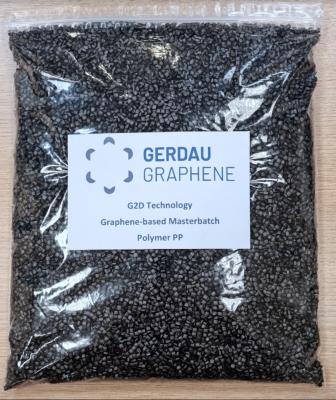The Graphene-Info weekly newsletter
Published: Tue, 06/14/22
The Graphene-Info newsletter (June 14, 2022)
Cannot read this? View it online here
UAE launches a global graphene funding initiative
Khalifa University in Abu Dhabi, United Arab Emirates, have launched a new global graphene funding opportunity, aiming to support the development and applications of graphene (and other 2D materials) in the areas of composites (lightweighting), water and energy.
Khlaifa University established a new fund, called the RIC-2D Research and Innovation Fund, which will offer funding of up to $2 million per year for each project, for a maximum project duration of 3 years.
Gerdau Graphene launches graphene-enhanced plastics
Gerdau Graphene has announced that it has created next-generation graphene-enhanced plastics at a Brazilian government-funded advanced materials center in São Paulo.

The new graphene-enhanced polymeric resin masterbatches formulas for polyethylene (PP) and polypropylene (PE) were created in partnership with Brazil’s EMBRAPII SENAI/SP Advanced Materials Unit, and are being piloted in a series of industrial applications within Gerdau’s factories. The new thermoplastic products created using these formulas will be stronger and offer greater overall performance while costing less to manufacture and producing significantly less waste across the value chain. The first commercial deliveries are expected in June.
Researchers design graphene-based charge-injection photodetectors
Researchers at Zhejiang Universityת University of California, The Chinese University of Hong Kong, Peking University, Aalto University, University of Cambridge and Nanjing University have developed a new graphene-based photodetector that could detect light within a broader bandwidth. Their device could be used to develop new and more advanced imaging technologies.
The teams work is based on traditional charge-coupled device (CCD) and complementary metal-oxide-semiconductor (CMOS) imaging technologies. The researchers stated that their imaging devices, combining CCD's MOS photogate for high sensitivity and CMOS's independent pixel structure, can significantly benefit monolithic integration, performance, and readout.
Researchers create improved wigs using graphene oxide
Researchers from China's Donghua University have developed a new way to make wigs more durable and longer lasting - using graphene oxide.
Hairpieces can be made of real human strands or synthetic materials, but either way, washing, UV exposure from the sun and repeated styling can cause these products to become dry and brittle. To extend the life of wigs, researchers have spray-coated a layer of graphene oxide on them, whereas other teams have immersed wigs in a keratin/halloysite nanocomposite. Since it's difficult to cover an entire hairpiece with these methods, the team wanted to see if a nanocomposite applied with a tried-and-true approach for coating surfaces with ultrathin films - known as the Langmuir-Blodgett (LB) technique - could improve coverage and increase durability.




